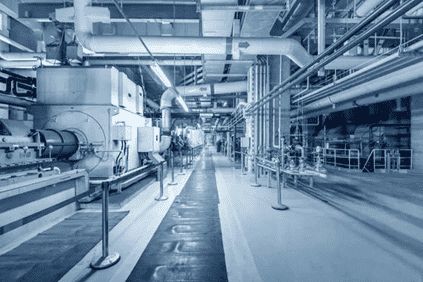Manufacturing
Smart water automation in the manufacturing industry involves the integration of technologies to monitor, control, and optimize water-related processes. This can lead to improved efficiency, reduced environmental impact, and better overall resource management. Here are some key aspects and features of smart water automation in the manufacturing sector currently being offered by Hydrologic MGP Systems:
1. Water Usage Monitoring
Implement sensors and meters to monitor water usage in different manufacturing processes.
Provide real-time visibility into water consumption patterns.
2. Automated Process Control
Integrate automation systems to control water-related processes such as cooling, heating, and cleaning.
Implement closed-loop control systems for precision and efficiency.
3. Leak Detection and Prevention
Use sensors and automated systems to detect and prevent water leaks in pipelines and equipment.
Implement shut-off systems to minimize water loss in the event of a leak.
4. Water Quality Monitoring
Deploy sensors to monitor the quality of water used in manufacturing processes.
Ensure compliance with quality standards and regulations.
5. Recycling and Reuse
Implement water recycling systems to treat and reuse water in manufacturing processes.
Optimize processes to reduce the reliance on fresh water.
6. Cooling Systems Optimization
Integrate smart technologies to optimize cooling systems in manufacturing.
Monitor and adjust cooling processes to minimize water usage and energy consumption.
7. Predictive Maintenance
Utilize predictive maintenance tools to anticipate equipment failures related to water systems.
Schedule maintenance proactively to minimize downtime.
8. Energy Efficiency in Water Systems
Implement energy-efficient technologies in water-related processes, such as pumps and heaters.
Monitor and optimize energy consumption for water-related operations.
9. Data Analytics for Optimization
Employ data analytics and machine learning to analyze large datasets generated by water monitoring systems.
Identify opportunities for optimization and efficiency improvements.
10. Remote Monitoring and Control
Enable remote monitoring and control of water systems to facilitate real-time decision-making.
Implement secure and reliable communication networks for remote access.
11. Integration with IoT (Internet of Things)
Connect devices and sensors through IoT to create a network of interconnected water management systems.
Enable seamless communication and coordination between different components.
12. Compliance and Reporting
Ensure compliance with water quality standards and regulatory requirements.
Generate automated reports for regulatory bodies and stakeholders.
13. Employee Training and Awareness
Develop training programs for employees to promote water conservation practices.
Increase awareness of the importance of water efficiency in manufacturing operations.
14. Scalability and Flexibility
Design the system to be scalable, accommodating a growing number of sensors and devices.
Ensure flexibility in adapting the system to different manufacturing processes.
Implementing smart water automation in the manufacturing industry can lead to more sustainable practices, cost savings, and increased operational efficiency. It also contributes to environmental responsibility by minimizing water waste and optimizing resource usage.

